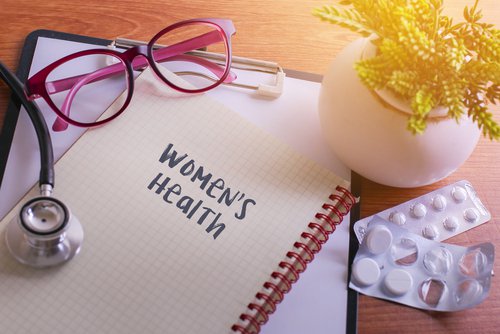Yes — Women’s Health Month is observed every May in the United States. This dedicated month brings awareness to the unique health issues women face and encourages all women to take proactive steps toward better physical and mental well-being.
But Women’s Health Month is about more than just doctor’s visits. It’s about education, empowerment, prevention, and advocacy. Whether you’re a healthcare provider, policymaker, mother, daughter, or community member, May is the time to shine a spotlight on women’s wellness from all angles.
📅 When Is Women’s Health Month Observed?
- Month: Every year in May
- Highlight Week: Begins on Mother’s Day, which marks the start of National Women’s Health Week
This observance is led by the U.S. Department of Health and Human Services Office on Women’s Health (OWH) and supported by public health organizations, nonprofits, and local communities.
🎯 Purpose: Why Women’s Health Month Matters

Women’s bodies go through unique life stages—from menstruation and fertility to pregnancy and menopause. In addition, chronic illnesses such as heart disease, autoimmune disorders, and mental health conditions disproportionately affect women.
Women are often caregivers for others but may neglect their own well-being. That’s why this month promotes:
- Preventive care and early screenings
- Mental and physical wellness
- Awareness of specific women’s health risks
- Access to equitable, inclusive healthcare
🔍 Health Issues Often Highlighted During Women’s Health Month
This month provides an opportunity to raise awareness around a wide range of health topics that specifically affect women. Below are the most frequently discussed:
1. Heart Disease in Women
- Leading cause of death for women in the U.S.
- Symptoms can differ from those in men (e.g., fatigue, nausea, shortness of breath)
- Awareness campaigns teach risk factors and preventive strategies
2. Reproductive and Sexual Health
- Topics include menstruation, PCOS, endometriosis, pregnancy, infertility, contraception, and menopause
- Encourages routine gynecological visits and Pap smears
- Promotes access to accurate information and safe reproductive services
3. Mental Health and Emotional Well-Being
- Women are more likely to experience depression, anxiety, and PTSD
- Focus on stress management, therapy access, and postpartum care
- Breaking stigmas around mental health through open conversations
4. Breast and Cervical Cancer Prevention
- Promotes mammograms, self-breast exams, and HPV vaccination
- Early detection saves lives
5. Osteoporosis and Bone Health
- Women are at higher risk due to hormonal changes after menopause
- Encourages calcium, vitamin D intake, and weight-bearing exercises
6. Autoimmune Diseases
- 80% of autoimmune disease patients are women (e.g., lupus, RA)
- Educating women on symptoms, diagnosis, and treatments
7. Diabetes and Obesity Prevention
- Maintaining a healthy weight, managing blood sugar, and making lifestyle changes
- Focus on nutrition, fitness, and metabolic health
8. Maternal Health and Mortality
- Addresses rising maternal mortality rates in the U.S., especially among women of color
- Calls for better prenatal and postpartum care access
🧠 Mental Health: A Core Pillar of Women’s Wellness

Women’s Health Month emphasizes that mental health is just as important as physical health. Topics include:
- Postpartum depression
- Burnout from caregiving roles
- Domestic abuse and trauma recovery
- Workplace stress and anxiety
🧘 Mental wellness is not a luxury—it’s a necessity. Women are encouraged to seek therapy, practice mindfulness, and create space for emotional self-care.
🩺 What Women Should Do During Women’s Health Month
This month is an excellent time to take charge of your health. Consider the following actions:
Schedule Preventive Checkups:
- Annual physical exam
- Pap smear and pelvic exam
- Mammogram (age or risk-based)
- Blood pressure and cholesterol tests
- Skin check for melanoma
- Bone density scan (age 65+ or earlier if at risk)
Focus on Healthy Habits:
- Eat a balanced diet rich in fiber, lean proteins, and healthy fats
- Move your body daily: walking, strength training, or yoga
- Avoid smoking and limit alcohol
- Get regular, restful sleep (7–9 hours per night)
Build a Mental Health Routine:
- Meditate, journal, or talk to a therapist
- Set boundaries and prioritize personal time
- Seek social connection and support groups
Learn Your Family Health History:
- Talk to relatives about chronic illnesses or cancer
- Use this data to guide screening timelines and health choices
🤝 How to Support Women’s Health Month (Even If You’re Not a Healthcare Provider)
Everyone can participate in raising awareness:
✅ For Employers:
- Host wellness workshops or webinars
- Provide health screenings or flu shots on-site
- Share wellness resources in internal newsletters
✅ For Schools:
- Educate students about menstrual health, self-esteem, and nutrition
- Promote inclusive health education for girls
✅ For Communities:
- Organize health fairs or charity walks
- Partner with clinics to offer free screenings
- Use local media to spread key health messages
🌎 Global Perspective: Is Women’s Health Month International?
While Women’s Health Month is recognized in the U.S., other countries have their own observances and initiatives. Globally, International Women’s Day (March 8) is a focal point for women’s rights, including access to healthcare.
Organizations like the World Health Organization (WHO) and UN Women support year-round initiatives to address women’s health, maternal care, and gender-based health disparities worldwide.
📣 National Women’s Health Week: A Special Focus
Held during the second week of May, this week-long campaign encourages women to:
- Take control of their personal health
- Educate others through events and campaigns
- Engage in virtual or in-person wellness activities
🔗 Visit: www.womenshealth.gov/nwhw for resources, toolkits, and social media materials.
Frequently Asked Questions
1. What is Women’s Health Month?
It’s a national health observance held in May to highlight the importance of women’s physical and mental health and encourage preventive care and wellness.
2. Who started Women’s Health Month?
The U.S. Department of Health and Human Services, specifically the Office on Women’s Health (OWH), is a key organization behind the observance.
3. How can I participate in Women’s Health Month?
Get a checkup, attend wellness events, educate others on social media, or volunteer with local women’s health organizations.
4. Is National Women’s Health Week the same as Women’s Health Month?
National Women’s Health Week is part of Women’s Health Month and typically begins on Mother’s Day. It’s a week-long campaign within the larger month-long observance.
5. Why is women’s health different from men’s?
Women face different risks, symptoms, and biological changes throughout life stages. Healthcare must be tailored to their unique physiology and experiences.
Final Thoughts: Women’s Health Is Worth Celebrating — and Prioritizing
Women’s Health Month is more than just an awareness campaign—it’s a call to action. It’s a reminder that women of all backgrounds deserve access to quality care, support, and education to live healthy, empowered lives. Whether you’re taking your first step toward a healthier lifestyle or helping others do the same, May is the perfect time to start.

Leave a Reply